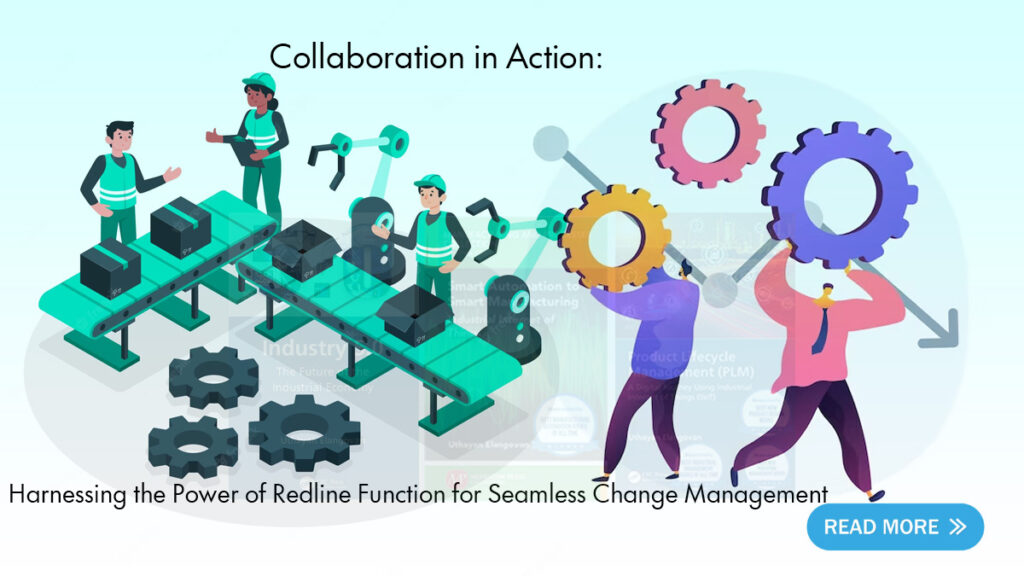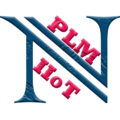Streamlining Change Management with Redline Function: A Practical Look at the Role of PLM in New Product Development

Introduction:
Change management plays a crucial role in the success of new product development (NPD) processes. It involves managing modifications, revisions, and updates throughout the product lifecycle, ensuring seamless collaboration among teams. In this article, we will explore the practical implications of change management, specifically focusing on the redline function, both without Product Lifecycle Management (PLM) and with the aid of Windchill PLM’s Change Redline feature.
I. Change Management without PLM:
When change management is handled manually or without a dedicated system, the process becomes prone to errors, delays, and miscommunications. Let’s consider a hypothetical scenario of a manufacturing company developing a new smartphone model.
1. Document Version Control:
Without PLM, managing document versions becomes a daunting task. Team members may inadvertently work on outdated drawings, leading to confusion and rework. For example, a design engineer might make modifications to a product blueprint, unaware that a purchasing agent has already placed orders for components based on the previous version.
2. Communication Challenges:
Effective collaboration is essential for successful NPD. However, without a centralized system, communication among team members becomes fragmented. Emails, spreadsheets, and physical documents serve as the primary means of communication, leading to delays, missed messages, and difficulties tracking changes. For instance, a quality control specialist might receive an updated testing protocol via email but fail to incorporate the changes, resulting in faulty testing procedures.
3. Tedious Change Tracking:
Tracking changes manually can be a time-consuming and error-prone process. Each modification requires individuals to annotate documents, track changes, and maintain a comprehensive change log. This method lacks transparency and makes it challenging to trace the history of revisions accurately. Consequently, teams may struggle to identify who made specific changes or understand the reasoning behind them.
II. The Role of PLM in Change Management:
Product Lifecycle Management (PLM) systems, such as Windchill PLM, offer comprehensive solutions for effective change management. PLM enhances collaboration, streamlines workflows, and ensures that teams work with up-to-date information.
1. Document Version Control:
A centralized repository for storing and managing new product development related documents. With Windchill PLM’s Change Redline feature, teams can easily track document versions, view changes, and identify modifications made by different team members. This capability minimizes the risk of working with outdated documents, improving efficiency and reducing errors.
2. Seamless Communication:
PLM facilitates seamless communication among team members. Windchill PLM enables individuals to collaborate within the system, eliminating the need for scattered emails and spreadsheets. Teams can comment, annotate, and discuss changes directly on documents, ensuring everyone stays informed and on the same page. For example, an engineer can highlight a design flaw in a 3D model, prompting immediate action from the design team.
3. Efficient Change Tracking:
Windchill PLM’s Change Redline feature revolutionizes change tracking. It provides a visual representation of modifications, allowing users to identify added, modified, or removed elements in a document. This feature eliminates the need for manual annotation and significantly improves traceability. Users can also access the change history log, which records every revision and associated details, including timestamps and responsible parties.
To ensure smooth change management, follow these PTC best practices for utilizing the redline function effectively:
Incorporate redlines into the initial planning stage to identify changes that won’t conflict with others. Adjust existing redlines based on change task permissions and redline access before creating the subsequent revision.
Initiate the execution of the change notice explicitly for implementing approved changes. Once the change notice is in progress, all redlines should be approved, and the creation of new redlines should be restricted.
Keep in mind that in certain change management processes, it may be possible to create resulting objects before the execution stage. If at least one resulting object exists in the change task, it will prevent the creation of a new redline.
Conclusion:
Change management is a critical aspect of successful new product development, and implementing the redline function through PLM significantly enhances the process. By centralizing document management, promoting effective communication, and providing robust change tracking capabilities, PLM systems like Windchill PLM empower teams to streamline their change management workflows and achieve greater efficiency and accuracy throughout the product lifecycle. Embracing technology and leveraging PLM tools paves the way for seamless collaboration, reduces errors, and accelerates innovation in the realm of new product development.
Ready to revolutionize your manufacturing enterprise? Explore Neel SMARTEC’s cutting-edge PLM services today and unlock your business’s full potential. Contact us for a consultation and start your journey towards manufacturing excellence.


